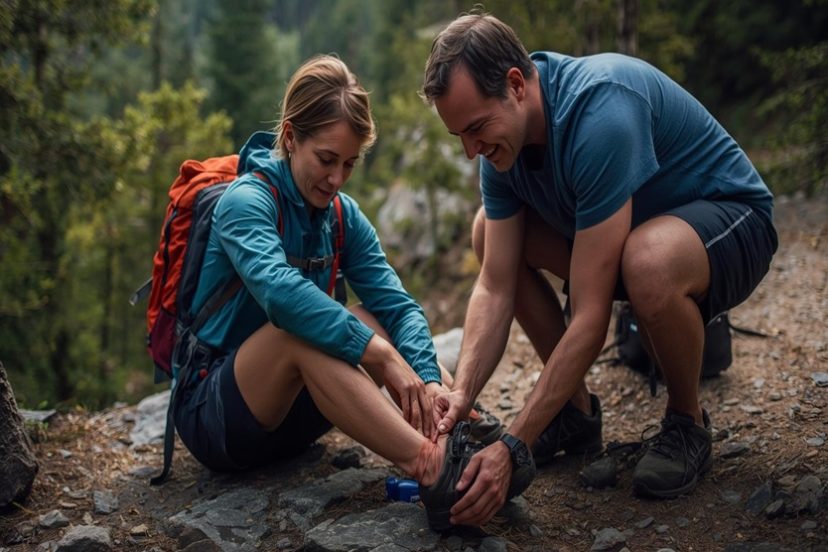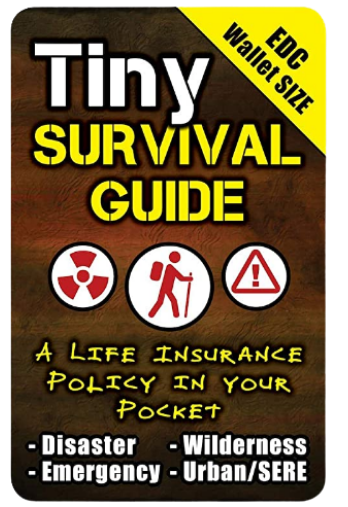School should always feel like a safe space where children can learn, grow, and thrive. But…
12 Quick First Aid Fixes For Wilderness Injuries

Venturing into the wilderness comes with incredible rewards, but it also carries the risk of unexpected injuries. A simple misstep on a rocky trail or an encounter with rough terrain can quickly turn a fun outing into a survival challenge.
Knowing how to treat injuries in the wilderness isn’t just a useful skill—it can make the difference between a minor setback and a serious medical emergency.
We’ve compiled twelve quick, practical first aid fixes that every survivalist should know. These methods are straightforward, actionable, and designed for situations where medical help might be hours—or even days—away.
1)) Stopping Severe Bleeding
Uncontrolled bleeding is the first and most urgent threat in any wilderness injury scenario. The key is to act fast and decisively.
Steps to stop bleeding:
- Apply firm pressure directly to the wound with a clean cloth, bandage, or even a piece of clothing.
- If the bleeding is severe and doesn’t stop, use a tourniquet above the wound. In emergencies, a belt or strap can serve as a makeshift tourniquet.
- Elevate the injured limb above heart level if possible.
Remember, stopping the bleed is the top priority before anything else. Once blood loss is controlled, you can focus on preventing infection and stabilizing the patient.
2)) Treating Cuts and Lacerations
Cuts and lacerations are common in the wild, from knife slips to thorn scratches. Proper cleaning and protection are essential to prevent infection.
Steps for treating cuts:
- Rinse the wound with clean water—boiled and cooled water is ideal.
- Remove any visible debris with sterilized tweezers.
- Apply an antiseptic if available.
- Cover the wound with a sterile dressing or clean cloth and secure it firmly.
For deeper cuts, consider improvising stitches using fishing line or thread if trained in basic suturing.
3)) Splinting Fractures and Broken Bones
A broken bone in the wilderness can be debilitating and dangerous if not stabilized. Improvised splints can prevent further injury and reduce pain.
Steps to splint:
- Identify the injured limb and check for circulation, sensation, and movement.
- Use rigid materials like sticks, trekking poles, or folded jackets to create the splint.
- Secure the splint with cloth, tape, or rope, ensuring it immobilizes the joint above and below the break.
- Avoid excessive tightening to prevent cutting off blood flow.
We must always remember: immobilization is critical for survival, especially if you need to hike out to seek help.
4)) Handling Sprains and Strains
Twisted ankles and pulled muscles are common injuries in the outdoors. Immediate care reduces swelling and speeds recovery.
Steps to treat sprains and strains:
- Follow the RICE method: Rest, Ice, Compression, Elevation.
- If ice isn’t available, cold water or a damp cloth can help reduce swelling.
- Use cloth or elastic bandages to apply gentle compression.
- Keep the injured limb elevated when possible to minimize swelling.
Even mild sprains can worsen without proper attention, so quick action is essential.
5)) Managing Blisters
Blisters may seem minor, but they can quickly stop a long hike. Survivalists know prevention is better than treatment, but sometimes blisters are unavoidable.
Steps for managing blisters:
- Keep the area clean and covered. Sterile gauze or even a clean cloth works.
- Avoid popping the blister unless it’s large and painful. If necessary, sterilize a needle and gently drain fluid, leaving the skin intact.
- Change the dressing frequently and protect the area from friction.
Proper foot care and awareness of friction points in your boots can prevent many blisters from forming in the first place.
6)) Treating Burns
Campfires, stoves, and even the sun can cause burns. Immediate care limits tissue damage and pain.
Steps to treat burns:
- Cool the burn with clean, cool water for at least 10–15 minutes.
- Cover the area with a non-stick sterile dressing.
- Avoid applying creams or ointments that could trap heat or cause infection.
- For severe burns, keep the person hydrated and monitor for shock.
Burns are not just painful—they can become life-threatening if left untreated. Quick, proper care is critical.
7)) Dealing With Hypothermia
Cold-weather injuries can escalate quickly, even in mild conditions. Recognizing and treating hypothermia can save lives.
Steps to handle hypothermia:
- Move the person to a shelter out of the wind and wet conditions.
- Remove wet clothing and replace it with dry layers.
- Use blankets, jackets, or even sleeping bags to insulate.
- Encourage slow consumption of warm, sugary drinks if the person is conscious.
- Avoid rubbing the skin, which can cause further tissue damage.
Being proactive about warmth and insulation is essential when navigating cold environments.
8)) Heat Exhaustion and Heat Stroke
Hot weather can be just as dangerous as cold weather. Survivalists must recognize heat-related illness early.
Steps to treat heat exhaustion:
- Move the person to a shaded area and cool their body with damp cloths or water.
- Encourage hydration with small sips of water or electrolyte solutions.
- Loosen tight clothing and allow air circulation.
For heat stroke, which is more severe:
- Cool rapidly using wet cloths or immersion if possible.
- Seek medical attention as soon as possible.
Quick recognition and cooling can prevent severe complications or death.
9)) Snake Bites and Insect Stings
Bites and stings can range from irritating to life-threatening, depending on the species and the victim’s reaction.
Steps for snake bites:
- Keep the person calm and immobilize the bitten limb.
- Clean the bite gently with water; do not cut or suck the wound.
- Apply a pressure immobilization bandage if dealing with venomous snakes, keeping the bandage snug but not tight enough to cut off circulation.
Steps for insect stings:
- Remove the stinger if present.
- Apply a cold pack to reduce swelling.
- Watch for signs of allergic reaction and be prepared to use epinephrine if necessary.
Survivalists must carry knowledge and basic tools to respond to wildlife encounters efficiently.
10)) Eye Injuries
Eye injuries can be common in wilderness settings—dust, branches, or debris can cause serious problems.
Steps to manage eye injuries:
- Avoid rubbing the eye.
- Rinse with clean water or saline solution to flush out debris.
- Use an eye patch or an improvised shield to protect the eye from further irritation.
- Seek help if pain, vision changes, or redness persists.
Preserving vision is essential for survival, especially if navigation or self-rescue is required.
11)) Dehydration and Shock
Dehydration can sneak up on even the most experienced outdoor adventurers, leading to shock if untreated.
Steps to treat dehydration:
- Encourage small, frequent sips of water.
- If possible, provide oral rehydration solutions to restore electrolytes.
- Monitor for symptoms like dizziness, confusion, or rapid heartbeat.
Steps to handle shock:
- Lay the person down and elevate their legs slightly if no spinal injury is suspected.
- Keep them warm and calm.
- Monitor breathing and circulation continuously.
Prompt action can stabilize the individual and prevent escalation.
12)) Improvised Tools and First Aid Kits
Survivalists know that how to treat injuries in the wilderness isn’t just about techniques—it’s also about having the right tools and improvising when needed.
Key tools to carry or improvise:
- Bandages, gauze, and adhesive tape
- Antiseptic wipes or solutions
- Multipurpose knife or scissors
- Trekking poles or sticks for splints
- Elastic bandages for compression
- Tweezers for splinters or debris
- Emergency blanket or insulating material
If you’re caught without a full portable first aid kit, everyday items like clothing, belts, or clean cloths can serve in a pinch. The key is improvisation combined with knowledge—knowing how to use what’s on hand to stabilize, protect, and prevent further injury.
Conclusion
Surviving in the wilderness isn’t about luck—it’s about preparation, skill, and confidence.
Knowing how to treat injuries in the wilderness gives you the edge when accidents happen.
These twelve quick first aid fixes cover the most common emergencies and provide survivalists with practical, actionable methods to keep themselves or their group safe.
Preparation is not optional. Carry a well-stocked first aid kit, practice these techniques, and stay calm when injuries occur. In the wild, knowledge is your most powerful tool—and action is what keeps you alive.





